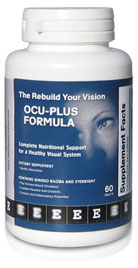|
Prosthetic Contact Lenses
Prosthetic Contact Lenses When you look at someone, one of the first things you notice is the other person's eyes. What you may not notice is that sometimes, those eyes that peer back are covered with prosthetic contact lenses. Prosthesis is any artificially-created device that's been created to replace a body part. Most often it's the prosthetic limbs that grab the media attention, but prosthesis can be created for various body parts including heart valves, teeth and even the eyes. Prosthetic contact lenses are not the same as prosthetic eyes. When just the lens needs replacement, it means that the eye still is intact. The prosthetic contact lens fits right over the eye, just as any type of Contacts would. It requires the same type of maintenance routine as other types of Contact Lenses and it feels the same, too.
Prosthetic contacts are perfect for people who have suffered an eye injury that has caused the eye to become somehow disfigured. They're also worn by individuals who have lived with an eye defect since birth. Such injuries and defects can leave the eye looking abnormal. For example, sometimes there is one big black circle where normally there would be a dark pupil surrounded by an eye color. A condition known as albinism might result in one eye being lighter in color than the other. The pupils might for some reason be misshapen or a person may have a deficiency in his or her color vision. Prosthetic lenses can also be used to realign an eye that has Cross Eye. No surgery is involved and when the lens is put into place, the colored part of the eye appears to be in its 'normal' position in the center of the white area as opposed to the corner.
Prosthetic contacts can disguise such inconsistencies making the eyes less awkward to look at and leaving the affected individual with a much higher level of self-confidence. These contact lenses aren't always needed to correct a Eyesight Problem, although they can easily be made that way. Oftentimes, they're purely cosmetic in nature. Since each reason for needing prosthetic contacts is unique, so too is the manufacturing process. The easiest way to create this type of prosthetic device is to work from close-up pictures that have been taken of both eyes. Digital photographs work best and provide the truest colors making it much easier to match eye color and any unique eye coloring patterns. Caring for prosthetic contact lenses is no different from normal contact lens maintenance routines. Because of the hand-crafted nature of these lenses, they generally are not made to be disposable. That means daily cleaning and disinfecting and weekly enzyme cleansing routines to remove protein build-up are important to both preserving the coloring of the contact lenses as well as preserving Healthy Eyes. If you feel you could benefit from prosthetic contacts, discuss this option with your eye doctor.

Subscribe to EyeSight Vision Care! , our monthly newsletter with in depth information to help you keep up to date on how to Protect Your Eyesight with a free bonus. Fill out the form below. You'll then receive an email asking you to confirm that you subscribed. You'll always have the option to unsubscribe at the click of your mouse.
|
More Information















